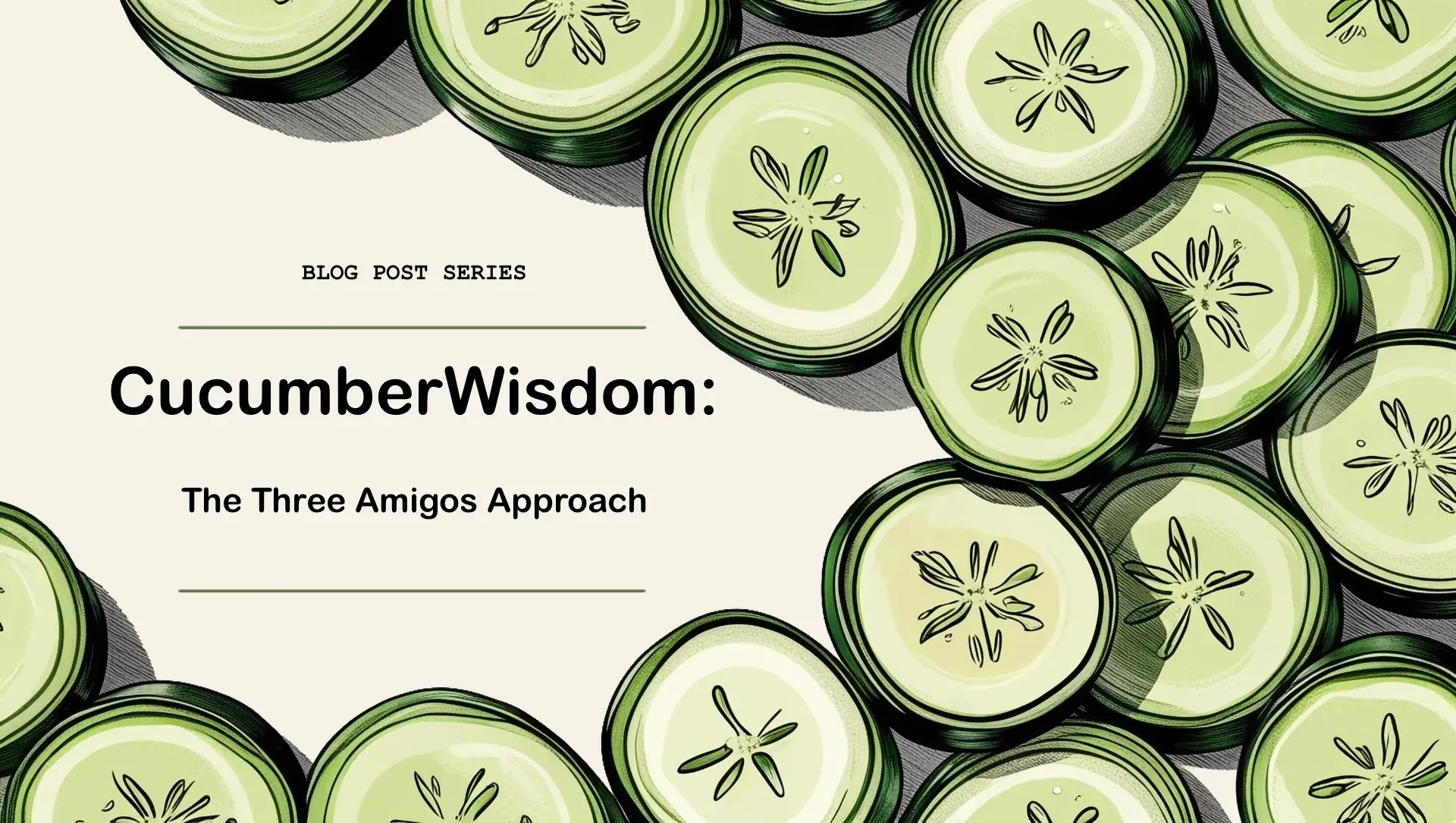Cucumber Wisdom: The Three Amigos Approach
Discover how the Three Amigos approach in Behavior-Driven Development (BDD) helps teams improve collaboration, build shared understanding, and deliver better software with Cucumber.

Why the Three Amigos Approach Matters
When software teams talk about collaboration, they often mean “syncing up later.” The Three Amigos approach challenges that.
It’s about bringing three key perspectives — business, development, and testing — together before a line of code is written.
The idea is simple but transformative: every feature is a conversation, not just a ticket.
When product owners, developers, and testers discuss examples together, they uncover assumptions, fill in gaps, and ensure that the feature reflects real user needs.
In practice, this is where Behavior-Driven Development (BDD) shines.
Cucumber gives those conversations a structure — a way to turn examples into living documentation that stays relevant as the product evolves.
Key Principles of the Three Amigos
1. Shared Language and Examples
“When examples are shared early, they become the single source of truth for everyone involved.”
The team should use a shared language, grounded in the domain — not in technical jargon.
The best discussions happen when examples are specific, realistic, and describe behavior rather than implementation.
That’s where Gherkin scenarios come in. They capture the essence of these conversations in plain language.
2. Early Collaboration, Fewer Surprises
The Three Amigos meet before development starts. This early collaboration:
- Surfaces misunderstandings before they reach production.
- Helps define acceptance criteria in clear, testable terms.
- Builds trust across roles — because everyone’s perspective matters.
When teams skip this step, they end up testing misunderstandings rather than software.
3. Living Documentation, Not Static Specs
The best scenarios aren’t just tests — they are executable documentation.
When product, dev, and test agree on examples together, those examples evolve naturally with the codebase.
That’s how teams maintain living documentation: by keeping conversations alive.
Making It Work in Your Team
Here are a few ways to integrate the Three Amigos approach into your workflow:
- Schedule short pre-development example workshops.
- Use Cucumber or similar BDD tools to capture examples right away.
- Encourage open, respectful discussions — even when perspectives differ.
- Treat every scenario as a shared artifact, not a tester’s script.
The goal isn’t to follow a rigid process. It’s to ensure that everyone — business, dev, and test — walks away with the same mental model of what’s being built.
Closing Thought
The Three Amigos approach is less about meetings and more about mindset.
It reminds us that great software doesn’t start with code — it starts with shared understanding.
Cucumber just gives us a clear, testable way to keep that understanding alive.
This article is part of my #CucumberWisdom series — a collection of reflections on how small shifts in process can create big changes in how teams collaborate.
Acknowledgements
The ideas explored in this article are inspired by The Cucumber for Java Book by Seb Rose, Matt Wynne, and Aslak Hellesøy — pioneers of Cucumber and champions of Behavior-Driven Development (BDD).
Their insights continue to shape how teams think about communication, collaboration, and quality in software.
